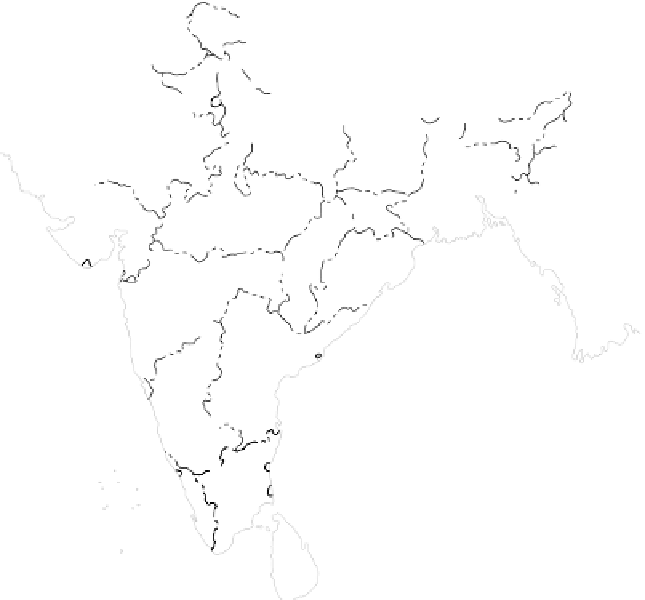Geography Reference
In-Depth Information
Figure 8-5
Sex ratios by state. Again, the lower (worse)
numbers are found in the poorest states that
remain steeped in patriarchal traditions. In
these societies, women receive little if any
education and have little say in their lives.
India's Sex Ratios 2001
< 800
801-900
901-950
951-1000
> 1001
The earliest cases of HIV were reported in Mumbai
and Chennai in 1986. HIV/AIDS is being combated by
prevention and treatment programs as well as publicity
campaigns that are expanding geographically . Many of
these are aimed at truck drivers; the incidence of AIDS is
significantly higher along major highways. Numerous
programs focus on commercial sex workers, but sex
workers are difficult to track down because many do not
operate from fixed locations.
Although it has narrowed, the knowledge gap between
urban and rural populations remains substantial. As of
2001, on average, 65 percent of rural women and 86 of
urban women had heard of HIV/AIDS. But in Bihar, just
22 percent of rural women had heard of HIV/AIDS com-
pared with 63 percent of urban women. In the important
industrial state of Gujarat, only 25 percent of rural women
and 62 percent of city women had heard of it. Given the
size and diversity of India' s population, tackling this
devastating disease will continue to be a daunting task.
India has a long tradition of herbal medicine based
on
Ayurvedic
and other ancientsystems. The government
is spending US$40 million on a “Golden T Triangle
Partnership (GTP)” to assess the country' s herbs scientifi-
cally , conduct clinical trials, and introduce them into the
mainstream. This is a difficult task because there are at
least 80,000
Ayurvedic
treatments involving the products
of some 3,000 plants. More than 7,000 firms make herbal
compounds for medical use. Most plants are cultivated
but many in the wild are endangered. Herbs are used to
treat countless ailments such as malaria and diabetes.
While health care remains woefully inadequate, it
has improved overall. Indeed, death rates have been
lowered all over the country . Killer diseases such as
smallpox have been eradicated, and infant mortality
rates have been lowered. More than 70 percent of
one-year-olds have been vaccinated against prevalent
diseases such as tuberculosis and measles. The life
expectancy of Indians has risen from an average age 32































































Search WWH ::

Custom Search